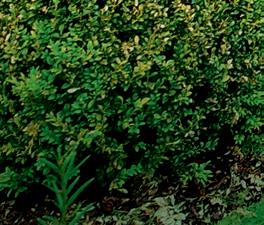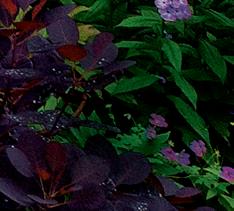








































































of its sunset vista, my raison d’être was to have an infinite view rather than a focal point, which led us to plant two avenues of tulip trees (Liriodendron tulipifera) with a crossroads in the middle that takes you into a meadow divided by a wide lime allée.” Here, mown paths lead to a large ornate rose arbour dripping with pale pink Rosa ‘Mortimer Sackler’. This necklace of gardens leads back towards the Georgian side of the house and those towering cedar of Lebanon trees. “The Georgians believed that these trees warded off evil spirits,” Antonia reveals. To the other side of the house lies the Walled Garden, dominated by a magnificent Hartley Botanic glasshouse, which is home to Antonia’s extensive pelargonium collection. “I can’t bear to throw any plant away and I vow to find a pot for each and every one of them,” she maintains. A section of the Walled Garden has been gravelled with meandering paths twisting among self-seeded, dry-loving plants that do well in these particular conditions. “The Gravel Garden previously consisted of two straight borders – there was absolutely no intrigue,” notes Antonia. “When we developed this





Some gardens are designed and created allof-a-piece. Others evolve, slowly, shaped as much by the passage of time and the vagaries of chance as by invention. Both approaches can result in dynamic, arresting gardens. But, to my eye at least, gardens that have taken time to find their feet, that have grown into themselves through numerous iterations and re-imaginings, share a certain ‘character’. Like an oak-aged wine or cask-matured malt, they have depth, they have roots, they have memories.
The garden at Old Erringham Cottage certainly fits this bill, having been lovingly nurtured by Fiona and Martin Phillips through four decades of hands-on garden-making. The cottage – parts of which date back to Tudor times – and its wraparound one-and-a-third-acre garden hunker down on a steeply sloping chalk escarpment in the South Downs. Accessed via a sharply climbing single-lane switchback, it cleaves to the hillside and presents stunning south-facing views out over the River Adur valley to the Sussex coast beyond.
After a number of years working and living abroad, Fiona, Martin and their three young children moved into the cottage in 1985. At the time the garden was mainly laid down to lawn with thin perimeter borders. They had no overarching plan but knew they wanted to make a garden. Their first task was to plant yew hedging, which would not only shelter them from the prevailing south-easterly winds but would also divide the open expanse of back garden into more intimate, manageable areas.
From day one Fiona knew she wanted plants, lots of plants, so over time the lawns shrank and the outlying borders migrated to the centre. To populate the garden she began propagating, something she took to with characteristic relish. Before long she was selling her horticultural progeny at local events, and today the garden boasts over 600 varieties of plants. As her passion grew, and her own garden began to bloom, she decided some formal training was needed, so, she enrolled at Brinsbury College. Here she flourished, so much so that before she knew it her hobby had become a vocation.
Though she ended up lecturing at Brinsbury for 18 years, in truth Fiona is something of a horticultural iconoclast. For her, the rules are there to be broken.
‘If it works, it works,’ is her mantra. “Never stop experimenting and learning,” she insists. “Never feel that you need to follow a rule book. Go with your instinct and see what happens…”
Fiona practises what she preaches. She is always keen to learn from the garden and allow fortuity to play its part. She encourages self-seeding and closely observes the garden’s own rhythms. “Often plants simply turn up in just the right place,” she explains.
“Last year, for example, this gorgeous echium arrived, a shock of blue, and luckily it landed in the





























 WORDS
WORDS









